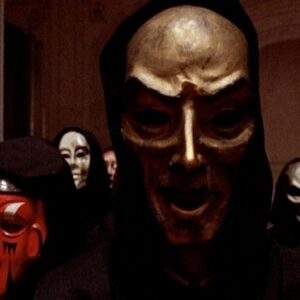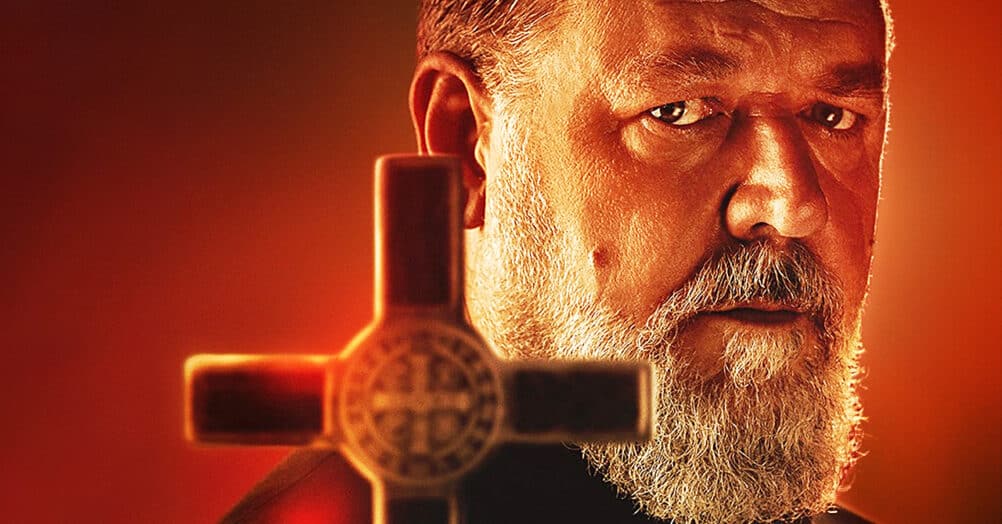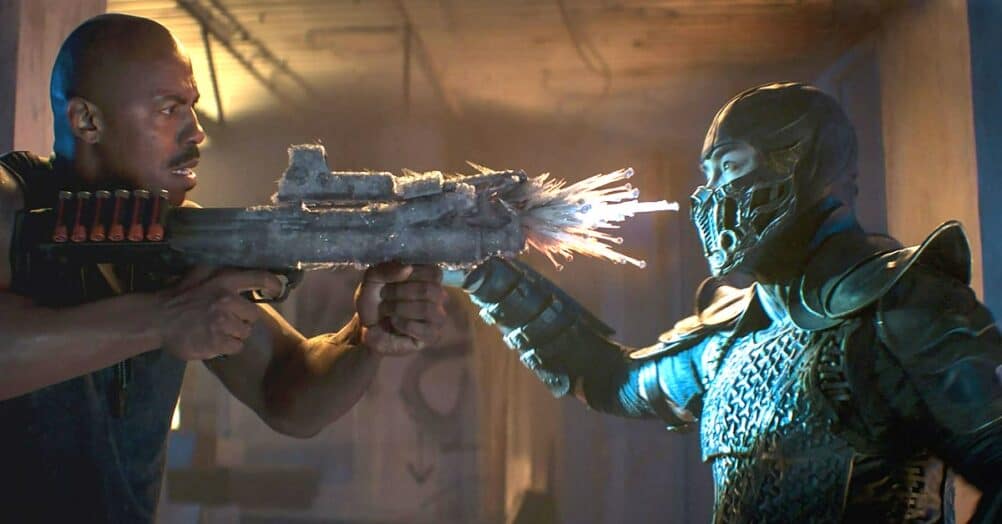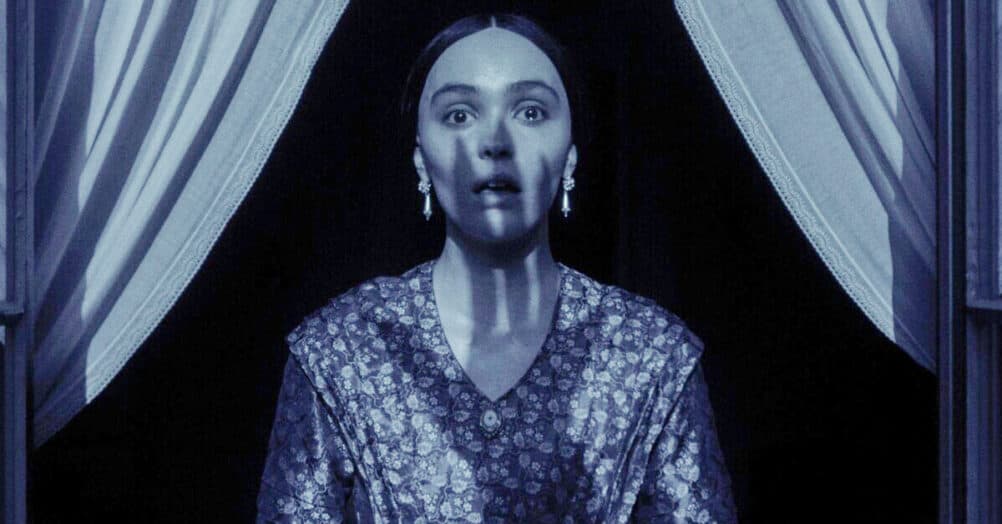Last Updated on August 5, 2021


STANLEY KUBRICK!
If there were ever a Mount Rushmore of feted film directors – American or otherwise – the late great Stanley Kubrick would have to be interminably etched on its facade. In my eyes, the all but peerless visual maestro is right up there with Welles, Hitchcock and perhaps D. W. Griffith…certainly in terms of the way they all molded, altered and forever changed the formal landscape and pushed the boundaries of cinematic technique. Quality over quantity surely became the dictum Kubrick fostered and followed to a tee, directing only 13 features during his illustrious 45 year career. But seriously, can you cite a bad one in the bunch? Hardly.
In fact, most of Kubrick's films have ascended to iconic, iconoclastic all-time great status, regardless of the harrowing genre essayed. THE KILLING (noir), PATHS OF GLORY (antiwar), LOLITA (pedophilia), DR. STRANGELOVE (nuclear armament), 2001: A SPACE ODYSSEY (sci-fi), A CLOCKWORK ORANGE (crime), THE SHINING (horror), FULL METAL JACKET (war) and EYES WIDE SHUT (erotic) are all wildly disparate in terms of subject matter, yet unified in terms of the first-rate craftsmanship demonstrated in each. And that's not the only commonality. Kubrick's depiction of humanity at its absolute lowest, darkest and most desperate is something that, while subtly shaded, shows up time and time again in his oeuvre. His movies are painted with horrific imagery, each and every one, unshakably memorable in their abject hauntedness.
BEST WORK

Let's be real. Kubrick's supreme skill and unparalleled talent is so superior to most of his contemporaries that his work can and should only be compared to his own. Again, he's peerless in that way, kind of like the Coen brothers are today (they often subtly salute Stanley in their flicks) . Given those parameters, it's then tough to boast a best of the best when it comes to his overall body of work. So f*ck it, for our purposes here at AITH, we feel it's justified to call attention to what still ranks as one of the all time greatest horror flicks ever attempted. I of course refer to Kubrick's 1980 adaptation of Stephen King's THE SHINING. Red motherfucking Rum Jack!
Ranking only behind THE TEXAS CHAINSAW MASSACRE as my all time favorite horror flick, I find it hard to believe that THE SHINING was met with tepid critical reception upon initial release in 1980. Like most of Kubrick's films however, THE SHINING was way ahead of its time, grossly misunderstood, immediately panned as a result, and would have to wait decades for critics and audiences alike to recognize the true brilliance of the film. Today however, it's venerated as not only the single best Stephen King film adaptation (despite the author's displeasure with Kubrick's choices), but easily one of the most enigmatic and enduringly chilling horror joints to ever be lit-up. Deservedly so, the movie is an both an utter hypnotic marvel and maddening subtextual puzzle!

For the former, we'd be remiss if we didn't highlight the bloodcurdling imagery of THE SHINING. So many lasting frames of terror. The river of blood disemboguing from the elevator. The ghastly twin girls. The REDRUM mirror. Jack's insane "Here's Johnny!" face, the snowy hedge maze, the putrid bathtub hag, and of course, the dauntingly enormous Overlook Hotel…the movie's main antagonist. The spatial impossibilities in the film are deliberately done so to disorient the viewer, to subconsciously disjoin your sense of the familiar. Then there's the gigantic Gold Room (ballroom), the expansive Colorado Lounge, the blood-red bathroom, the labyrinthine kitchen and storage room. No question, The Overlook plays a major role in the film and the sumptuous sets Kubrick erected at his infamous Elstree Studio in England are the major reason why. Not for nothing, but for a movie called THE SHINING, the lighting in the film is as just integral as any other portion of the production design, maybe even more so, in terms of achieving the arresting visual motifs in the film.

As for the latter, did you guys see that fascinating (if frustrating) doc ROOM 237? Weird shite right? Ludicrous and far-fetched at times, sure, but certainly on the right track as far as Kubrick's penchant for lacing his films with encoded clues and hidden meanings. The Native American genocide subtext is certainly hard to dismiss, as is a sly nod or two to the Apollo Moon Landings and Kubrick's publicly known involvement (NASA helped him with 2001 and BARRY LYNDON). But really, if you want a far more comprehensive analysis of THE SHINING (and other Kubrick works), I urge you to check out a British bloke by the name of Rob Ager. Dude's on the money! As for my own personal interpretation of THE SHINING, here it is. All we really see after a certain point in the film, is the horror novel Jack Torrance is inspired to write. In the beginning of the film, when Grady tells Jack about the previous owner who chopped up his family with an axe…a light bulb goes off in Jack's brain, followed by a "that is some story." From then on, during/after every key horror moment in the film, we can actually hear the sound of keys typing on a keyboard. THE SHINING is like a horror version of the movie ADAPTATION…all we're really watching is the novel Jack is writing. Bet!
WORST WORK

I'm not even about to indict Kubrick on grounds of poor quality. Sure, I could wax critical about FEAR AND DESIRE from 1953, but what's the use. Once given the requisite time and resources, Stanley quickly proved his filmmaking worth. Namely in the prescient, nonlinear 1956 crime-noir THE KILLING, in which a gang of stickup-men knock off a racetrack. A solid and stylish flick that laid the foundation for shite like PULP FICTION decades later. Typical Kubrick, always one step ahead!
To that end, let's have a look at LOLITA, Kubrick's 1962 adaptation of the wildly controversial Vladimir Nabokov novel. In fact, the tagline for the picture was "how'd the ever make a movie of Lolita!" I'll tell you how…through sly innuendo, bodily suggestion and skirted imagination. We never actually see or hear anything terribly sexual or predatory, precisely because such was strictly forbidden under the Hayes Code. So instead, Kubrick has to work in a subtle subtext that operated below the surface of the primary narrative. And this is where Kubrick cut his teeth in constructing dual-narratives…what's upfront and what's below!
And really, when you take away the conventions of a genre flick, what's more terrifying than pedophilia? If you've not seen LOLITA, the title character refers to a 14 year old nymphet (played by Sue Lyons), who becomes infatuated with college professor Humbert Humbert (played brilliantly by James Mason). The great Peter Sellers pops up as Clair Quilty, head of a nefarious pedophilic sex-ring operation that lures young girls like Lolita into its quiver. Trust, it's a disturbing film, made all the more impressive by tackling such a subject in 1962.
TRADEMARKS

I can't really think of a filmmaker who has more trademarks and distinguished techniques than Mr. Kubrick. We all know of Kubrick's obsessive attention to detail and his reputation for excessive takes and long shoots. He was a tireless perfectionist, understood. We can talk about his predilection for natural source lighting (lamps, candles), deep focus long shots, the balletic Steadicam work his cameraman Garrett Brown invented and really showcased on THE SHINING (Danny on his tricycle, for example). We can discuss the disturbing contrapuntal music choices he employed, a la "Singing in the Rain" in CLOCKWORK – in which he sets a delightful piece of music to a horrendous graphic image…creating a jarring response in the viewer. On and on. We can cite how he adapted all but his first two films from a source novel, often writing the script as well. We can highlight his penchant for voice-over narration, or setting key scenes in a bathroom, using extreme close-ups and elaborate tracking shots.
And what about the infamous Stanley Kubrick glare…the hypnotic thousand yard stare! Whether it's the opening shot of McDowell in A CLOCKWORK ORANGE, Private Pyle right before blasting himself in the dome in FULL METAL JACKET, or Jack Torrance and his wolf-like glint inside the Colorado Lounge (that black turtleneck!)…this is a recurring image motif that appears in all of Kubrick's films. It's an image of personified evil, head down and eyes up, that Kubrick time and time again used to portray the emotional state of a character.
HIDDEN GEM

Look, when mathematically more than half of your movies rank in the IMDB Top 250, it's hard to mine an inconspicuous gem. Oh the burden of greatness! So instead, why not take this opportunity to assess Kubrick's final film, which, in the way most of his flicks suffered from, is still waiting on the masses to catch up with it. For fucks sake, how long will it take! Serendipitously, July 16th will mark the 15 year anniversary of what is possibly my favorite Kubrick flick to boot (he himself reportedly felt the same) – the sublimely encoded thriller EYES WIDE SHUT!
On the surface, EYES WIDE SHUT is about an upper-class Manhattanite couple grappling with thoughts of infidelity. Below the surface, as the title suggests, the film boasts more symbols and hidden messages than a goddamn Dan Brown novel. It really does. Per our subtextual discussion of THE SHINING – a double-narrative Kubrick learned how to fashion on LOLITA given its subject matter and prohibitive 1962 production code – EYES WIDE SHUT is really about one man's fractal, hallucinatory dream-state as he wrestles with carnal desires and marital insecurities. But that's just the start. Power and wealth, the secret elite, cabalistic rituals and the like become fodder for a much larger statement Kubrick seemed to be making. Such a densely rich, candy-colored 160 minutes of subliminal hypnosis that operates, much like real life dreams (the movie was based on the book Traumnovelle, which translates to Dream Story), on a subconscious level. I really can't praise EYES WIDE SHUT enough, in fact I make it a point to delve into its maddening mysteries every six months or so. I urge you to do the same!
NEXT PROJECT

Seeing how the legend passed away in March of '99, only a few days after turning what's been reported to be the final cut of EYES WIDE SHUT, it's safe to say there's no next project for Sir Stanley. That said, his influence still lives on. For instance, after a dozen years of developing material for A.I. ARTIFICIAL INTELLIGENCE, he finally decided that, since the technology wasn't advanced enough yet to allow a real robot to star in the film (instead of Haley Joel Osment), Kubrick handed the project off to pal Steven Spielberg. Kubrick simply felt the material better suited to Spielberg's pop sci-fi sensibilities. That said, Spielberg give more than a handful of visual salutes to Stanley in the film, including the infamous thousand yard stare that Kubrick has become synonymous with.
But that's not all to Kubrick's posthumous sway. While not technically a genre piece, I'm sure you'd still be interested to note it was recently reported that Kubrick's long, long-gestating NAPOLEON epic…a movie he tried to get made after writing way back in 1961…may find a home at HBO as a miniseries. Not only that, the infamous "best movie never made" has been linked with Baz Luhrmann as a potential director, with Spielberg spearheading. If this turns out to be true, and right now it's still very early in the discussions, Kubrick's authorial voice may ring aloud once more!
OVERALL

Get 2001: A SPACE ODYSSEY Here
In addition to being a superior craftsman to almost everyone before or since, it's equally important to note that the late great Stanley Kubrick marched to his own creative drum. Dude owned his own camera and lighting equipment, negotiated an iron-clad final-cut clause in his longstanding Warner Brothers contract, and operated almost entirely away from the Hollywood factory line system. As a result, his movies are uncompromised and truly reflect the vision of a filmmaking master. Often castigated for being cold and demanding, subjecting his actors to lengthy shoots and multiple takes, one can't argue with the results produced. Of his 13 features since 1953, seven of them currently rank in the IMDB Top 250 (PATHS OF GLORY, DR. STRANGELOVE, 2001: A SPACE ODDYSSEY, A CLOCKWORK ORANGE, BARRY LYNDON, THE SHINING and FULL METAL JACKET). Now that's one hell of a track record!

















Follow the JOBLO MOVIE NETWORK
Follow us on YOUTUBE
Follow ARROW IN THE HEAD
Follow AITH on YOUTUBE